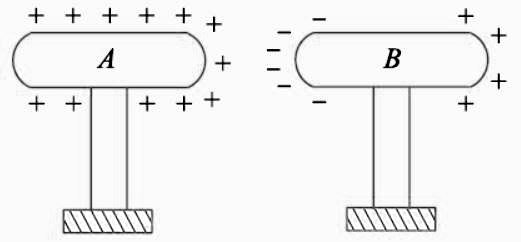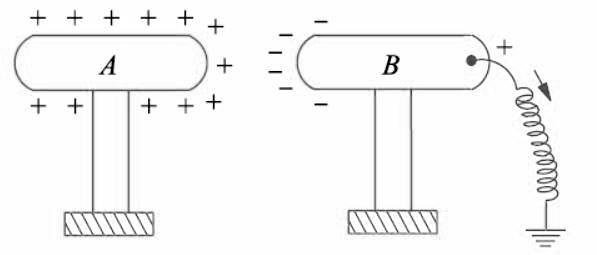Electrostatic Induction
What is Electrostatic Induction?
It is found that when an uncharged body is brought near a charged body, it acquires some charge. This phenomenon of an uncharged body getting charged merely by the nearness of a charged body is known as induction.
In the figure given below, a positively-charged body A is brought close to a perfectly-insulated uncharged body B. It is found that the end of B nearer to A gets negatively charged whereas further end becomes positively charged. The negative and positive charges of B are known as induced charges. The negative charge of B is called ‘bound’ charge because it must remain on B so long as positive charge of A remains there. However, the positive charge on the farther end of B is called free charge.

In the figure given below, the body B has been earthed by a wire. The positive charge flows to earth leaving negative charge behind. If next A is removed, then this negative charge will also go to earth, leaving B uncharged. It is found that :
(i) a positive charge induces a negative charge and vice-versa.
(ii) each of the induced charges is equal to the inducing charge.

What is meant by charging by induction?
Read article – Units of Resistivity
Visit NCERTplanet.com for NCERT solutions and Textbook downloads




